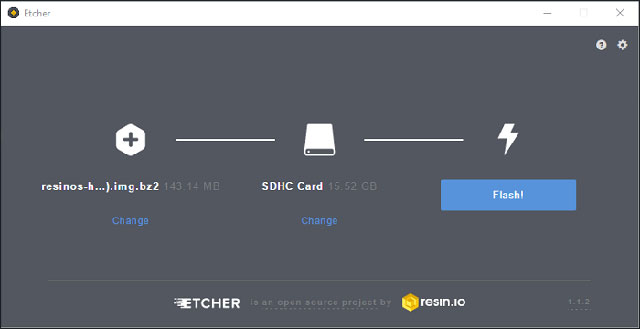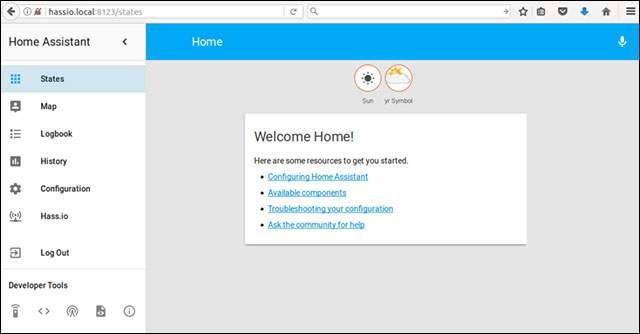Instructions for installing hass.io on Raspberry Pi 3
Although more and more competitors, including formidable competitors like Odroid XU4, Raspberry Pi are still one of the single-board computers that many people choose. Besides many unique ideas taking advantage of this compact computer such as making media servers or game consoles . the benefits of compact, low power consumption make it a suitable choice for home users. minh.
Home Assistant is a software that helps act as a support center for controlling smart home devices and automated features. It's available for a Raspberry Pi version called Hass.io, a Raspbian-based Hassbian version. In addition, the Home Assistant can also be installed on other OSs such as CentOS, Red Hat Enterprise Linux, Fedora, Windows . as long as it supports Python environment from 3.5.3 and above.
Instructions for installing hass.io on Raspberry Pi 3
The necessary equipment
- Raspberry Pi (Pi 3 or Pi 3 B + recommendation)
- MicroSD card, size 32GB or more
- Power source (minimum 2.5A)
- SD card reader (most laptops are available, or USB readers can be used)
- Ethernet cable (option, hass.io can use WiFi)
- Raspberry shell (optional, but recommended)
The software needed
- Hass.io, download the version of Raspberry here
- Etcher to write Hass.io image on SD card here
- Editing tools, such as Visual Studio Code
Steps to install hass.io on Raspberry Pi
When you have fully prepared the device and downloaded the necessary software, please install hass.io on Raspberry 3.
Step 1:
Insert the SD memory card into the computer (or via the card reader), then open Etcher. Here you select the IMG file of hass.io software downloaded and decompressed earlier and flash hass.io to the card.

Flash hass.io to SD card
Step 2:
Open system-connections is in resin-boot on the new SD card created with the text editing tool. Change ssid to the WiFi network name you want to use and set psk as the password for the network. Then remove the card from the device.
Step 3:
Insert the SD card into the Raspberry Pi 3, if you use an Ethernet network cable, connect the cable, then plug in the power and turn it on.
Step 4:
When the Raspberry Pi machine turns on, it will connect to the Internet and download the latest version of the Home Assistant. This will take about 20 minutes.
Step 5:
When hass.io installation is complete, access http:///hassio.local: 8213 on your computer using a browser. The Home Assistant's Home screen appears showing that you have successfully installed it.

Home screen after successful installation hass.io on Raspberry 3
See more:
- How to start Raspberry Pi 3 from USB
- 5 great apps that make your Raspberry Pi really useful
- The best 10 operating systems for single-boad (SBC) computers
You should read it
- How to install NOOBS on Raspberry Pi
- Instructions on 2 ways to install MongoDB on Raspberry Pi
- How to install Asterisk on Raspberry Pi
- How to install NordVPN on Raspberry Pi
- How to install CentOS on a Raspberry Pi
- How to install Windows 11 on Raspberry Pi 4
- How to install FydeOS on a Raspberry Pi
- How to use Raspberry Pi Imager to install Raspberry Pi OS
May be interested
- Raspberry Pi AI Kit: Bring AI to Raspberry Pi
 the raspberry pi ai kit is essentially raspberry pi's new m.2 hat+ board integrated with the hailo-8l acceleration module.
the raspberry pi ai kit is essentially raspberry pi's new m.2 hat+ board integrated with the hailo-8l acceleration module. - How to install LibreELEC on Raspberry Pi 4
 the raspberry pi 4 is the most powerful piece of hardware to come from the pi platform. it has usb 3.0, more ram and faster cpu. for this reason, the pi 4 is perfect for a linux-based media player operating system like libreelec.
the raspberry pi 4 is the most powerful piece of hardware to come from the pi platform. it has usb 3.0, more ram and faster cpu. for this reason, the pi 4 is perfect for a linux-based media player operating system like libreelec. - How to install Caliber Content Server on Raspberry Pi
 caliber is a great piece of software for managing your ebook collection. in today's article, tipsmake will guide you how to install caliber content server on the raspberry pi.
caliber is a great piece of software for managing your ebook collection. in today's article, tipsmake will guide you how to install caliber content server on the raspberry pi. - Learn Pi Imager, How to Use Raspberry Pi Imager
 the raspberry pi foundation recently released a new application for recording sd cards for the raspberry pi. the new program, called raspberry pi imager, launches march 5, 2020.
the raspberry pi foundation recently released a new application for recording sd cards for the raspberry pi. the new program, called raspberry pi imager, launches march 5, 2020. - Install Kodi to turn Raspberry Pi into media center at home
 how to turn kodi into the best home media center in the world? today's article will show you how to install kodi to turn raspberry pi into media center at home.
how to turn kodi into the best home media center in the world? today's article will show you how to install kodi to turn raspberry pi into media center at home. - How to use Raspberry Pi Imager to install Raspberry Pi OS
 raspberry pi foundation recently released a new app for burning sd cards for raspberry pi. the new program, called raspberry pi imager, launched on march 5, 2020.
raspberry pi foundation recently released a new app for burning sd cards for raspberry pi. the new program, called raspberry pi imager, launched on march 5, 2020. - 5 ways to make good use of Raspberry Pi 4
 the latest raspberry pi 4 has the strongest hardware version, opening up completely new categories of what you can do with the application.
the latest raspberry pi 4 has the strongest hardware version, opening up completely new categories of what you can do with the application. - 7 best Raspberry Pi 4 cases
 although the raspberry pi 4 is quite small, that doesn't mean you shouldn't equip it with an appropriate 'home'. here are the 7 best raspberry pi 4 cases you can buy right now.
although the raspberry pi 4 is quite small, that doesn't mean you shouldn't equip it with an appropriate 'home'. here are the 7 best raspberry pi 4 cases you can buy right now. - How to set up Raspberry Pi
 you may need some extra hardware and software for many of these projects, but the raspberry pi is still a great base.
you may need some extra hardware and software for many of these projects, but the raspberry pi is still a great base. - What is the difference between Raspberry Pi 4 and other models?
 raspberry pi 4 is a game changer. here's what you need to know about pi 4 and how this model is different from the previous raspberry pi 3b +.
raspberry pi 4 is a game changer. here's what you need to know about pi 4 and how this model is different from the previous raspberry pi 3b +.










 What you need to know about retro gaming on Raspberry Pi
What you need to know about retro gaming on Raspberry Pi 5 ways to copy data from Raspberry Pi to PC
5 ways to copy data from Raspberry Pi to PC Create your own wireless printer with Raspberry Pi
Create your own wireless printer with Raspberry Pi 5 interesting activities to learn about programming on Raspberry Pi for children
5 interesting activities to learn about programming on Raspberry Pi for children